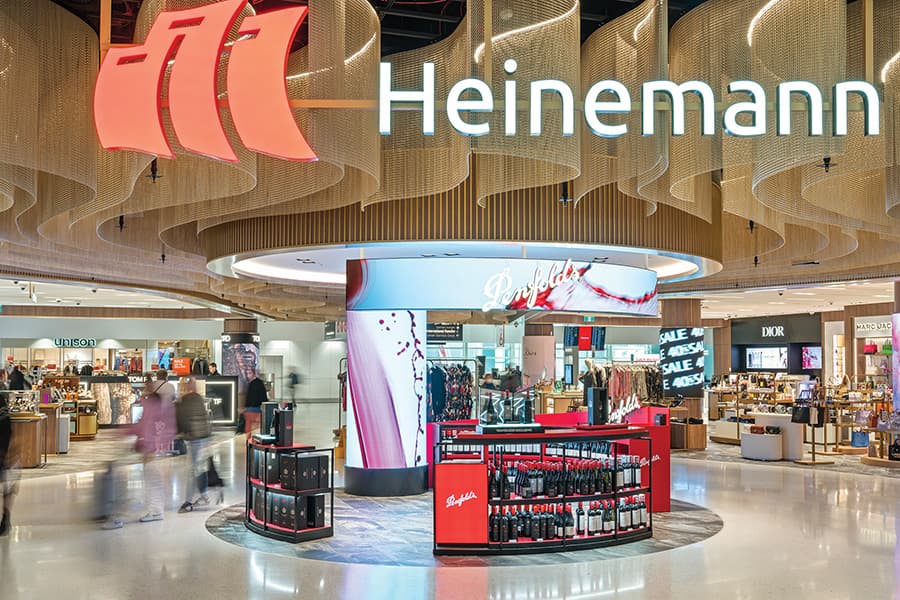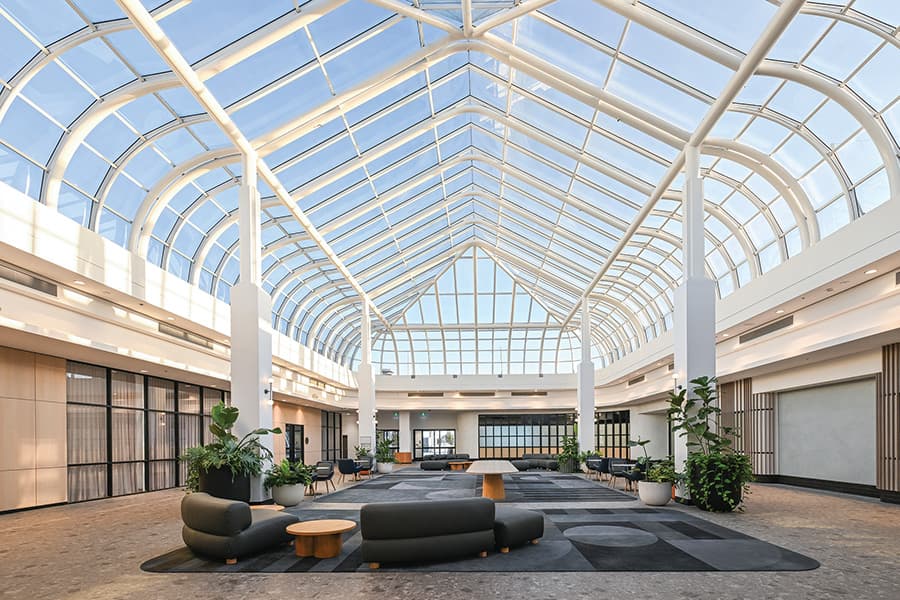In the latest issue of SCN magazine, we bring together insights from key industry partners who play pivotal roles within the shopping centre industry. Through an engaging Q&A, we delve into their strategies, challenges and innovations, offering a behind-the-scenes look at how they are navigating the complexities of this dynamic sector. Here we feature Daniel Morelli, Head of Small Works at Mainbrace Constructions.
Tell us about Mainbrace and the role it plays within the shopping centre industry?
We’re Australia’s leading retail builder, having worked with virtually every major retailer in Australia during the past 35 years. We really just love everything about retail, the fast-paced nature, the challenges, the impact that it has on communities, the list goes on! From large-scale greenfield developments and supermarket refurbishments to fitouts, rebrands, rollouts and shopping centre upgrades – we do it all. We work closely with our clients to bring their visions to life and create spaces people love to shop in, and we’re excited to keep doing that for years to come.
What is your current role and main responsibilities?
My current role at Mainbrace is Head of Small Works and I’ve recently been appointed as a Director and Board member.
Small Works combines the expertise of our supermarket refurbishments and Interiors teams. It’s a strategic move that optimises our resources, enabling us to deliver small-scale projects with greater efficiencies, for a smoother experience for our clients.
Specialising in projects from $100,000 to $5 million, we undertake diverse projects from supermarket refurbishments, fitouts and rebrands to roll-outs, shopping centre upgrades and small greenfield builds.
While Mainbrace has traditionally delivered these types of projects across our three operational states, the establishment of Small Works creates an opportunity for us to refresh and focus not only on our team, but also on what our clients really need, which is a professional option for smaller projects, certainty on delivery and a no-fuss approach.
I lead our NSW team while ensuring the strategic and operational approach of the broader Small Works division across the country. This involves supporting each state team and driving continual improvements in efficiency and innovation, especially in project delivery and business development.
Can you tell us about some of your recent projects?
Our Small Works team has been busy across all states lately.
In Sydney, we recently completed a project at Sydney Airport for Heinemann Oceania, which involved working in a live environment and was especially challenging given the several hundred thousand passengers passing by each week. The project has modernised the retail area of the departures terminal and each time I get a flight, I experience that feeling of pride seeing the work we were able to achieve.

Sydney Airport
Our Victorian team has been able to complete some shopping centre upgrade works at Bayside Shopping Centre for Vicinity, backfilling the old Myer space, to make way for some new mini-majors and a co-worker hub. Similarly, our Queensland Small Works team has been completing works for Stockland at Hervey Bay, repurposing 1,900m2 of retail space to create two new tenancies, as part of a large format retail centre.
In addition to this, we have seen a trend with Macquarie Centre, Kellyville Village and Bankstown Central among other prominent retailers, investing in upgrading their existing assets to improve the local shopping experience. We always get a kick out of seeing the happy faces of the local community enjoying the new space on opening day.
What excites you about the future and how is Mainbrace evolving?
Mainbrace takes a can-do, no-fuss approach. Our culture guides how we care and take pride in what we do, meaning our teams go the extra mile to ensure projects are successful for everyone involved. It’s more than words – everyone genuinely lives and breathes this approach.
It makes for a collaborative and inclusive environment in which people are encouraged, and afforded the opportunities, to grow their careers. It’s typical for our cadets to progress to senior roles within the company and it’s rewarding to play a part in their growth.
The future is exciting because we have the foundation to be more than just another builder. Everyone across the business knows they can make a meaningful impact, whether it be through the creation of wonderful retail experiences, empowering the next generation of women in construction, enhancing the sustainability of our business and more.
How are sustainability and environmental considerations impacting your business?
In 2020, Mainbrace adopted an ambitious sustainability strategy that demanded we go beyond mere compliance. By doing “more than just playing our part”, it’s about contributing to a brighter future.
Since then, we’ve come a long way. Today, we have a full-time sustainability team with resources that focus internally, help our clients achieve their goals and identify innovations with potential application on our sites.
With this mantra, we focus on what we have the most control over. Waste diversion and minimising construction waste is a major opportunity, and over the past five years, we have improved our diversion from landfill ratio to an impressive 95% today. We’ve also enhanced our capacity to deliver Green Star-certified projects in support of our clients’ sustainability objectives.
Additionally, we are future proofing our Mandatory Climate Reporting requirements by tracking and reducing our Scope 1, 2 and 3 emissions, in pursuit of our FY2025 carbon neutral target. We’re on track to achieve this after implementing various carbon reduction initiatives in recent years.

Bayside Centre, VIC
What trends do you foresee shaping the future of retail over the next five to ten years?
Retail may be experiencing challenges, but this sector is dynamic, it adapts to change, and it defines new trends not only in the way people shop, but also live.
We’re retail construction specialists and from this perspective, we’re seeing an increase in the transformation of retail-only spaces into mixed-use developments integrating office, entertainment, healthcare, hospitality and other uses. This can increase foot traffic and enable centres to extend opening hours, unlocking new opportunities for retailers.
We’re also seeing retailers creating environments that appeal to the environmentally conscious, such as through access to EV charging and public transport, as well as other long-term sustainable solutions to appeal to investors and shoppers alike.
The rise of e-commerce will continue to impact retail and while bricks-and-mortar stores still play an important role in transactions, they also have an opportunity to deliver experiences and enhance social connection. For some retailers, this might mean smaller stores but with smarter solutions to expedite products to consumers.
We’re likely to see further investment in well-located but underperforming neighbourhood assets. Mainbrace has recently completed numerous projects to convert larger retail spaces into smaller convenience retail and food courts, with upgraded amenities to deliver enhanced experiences.
What’s the best piece of advice you’ve been given?
My dad and grandpa gave me very similar advice, which was to always say “yes” – within reason – to opportunities that expand your horizon. Becoming an expert in any role is about developing your experience and understanding. Taking on any opportunity, whether it be working remotely, away from home, on night shift or on projects that seem impossible, helps you gain perspective and knowledge.
What’s a distinct memorable moment from your career?
The most challenging jobs are the ones you learn the most from. As a post-graduate cadet with just nine months’ experience, I joined a team on a project at Singleton, in the NSW Hunter region. The team was highly capable, with plenty of experience and the collective knowledge to rival any retail construction team in Australia. And then there was me.
We were working out of town within a live operating environment and there were budget constraints. Against this background, I was forced to learn a considerable amount in a short space of time, not only in terms of construction techniques but also in the way to manage people and teams.
The camaraderie within that team is something I still feel. We had a great deal of respect for each other and to this day, I reach out to the people on that project to ask advice and will continue to do so.
This exclusive Q&A feature is published in the latest issue of SCN magazine – premium members can view the digital magazine here.





















